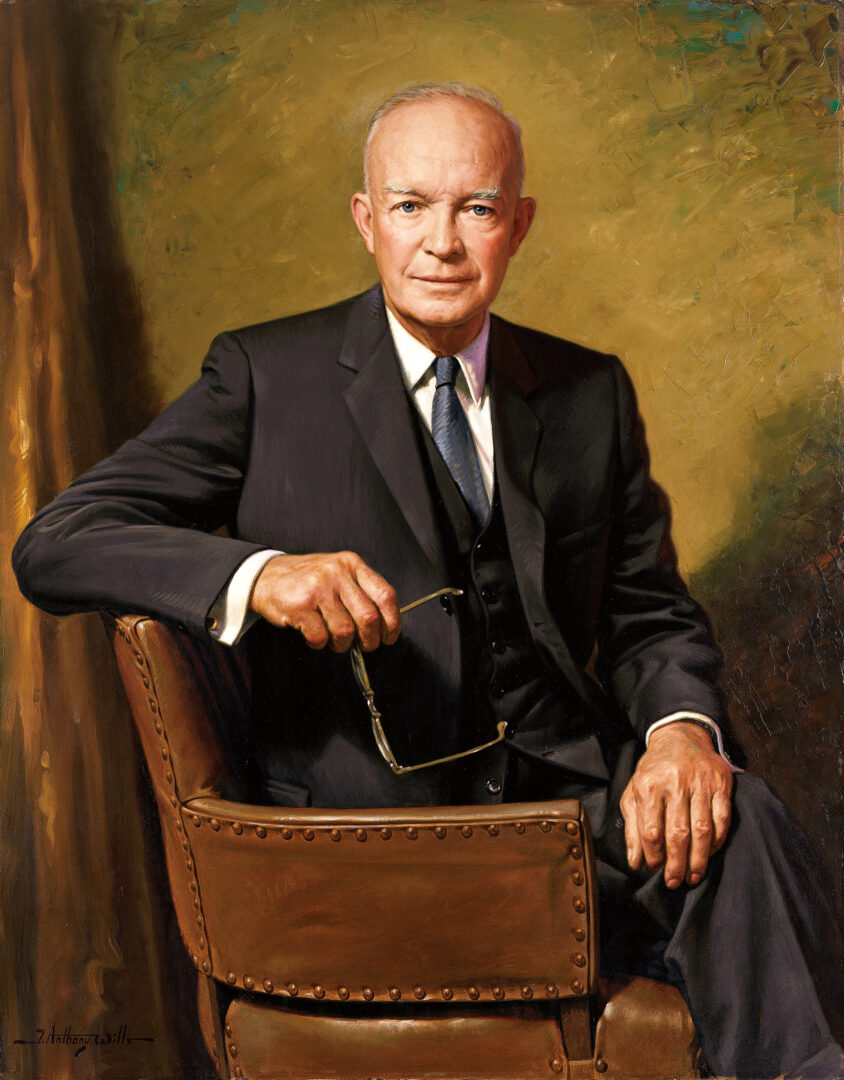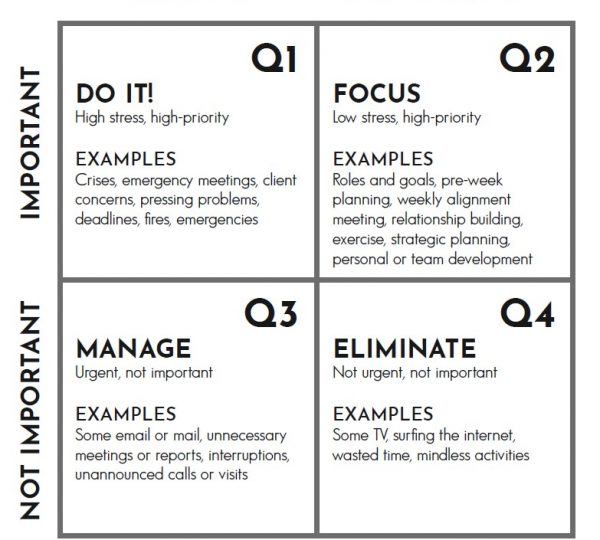Background
United States President Dwight D. Eisenhower, who was the Commanding General of the U.S. Armed Forces and Supreme Allied Commander in WW2, developed a four-quadrant matrix to help him determine if he was using his time effectively.
Highly successful leaders, like Dwight, can use this matrix to evaluate, and then “calibrate,” how they use their time to prioritize and manage their tasks – and you should too.
Many have modified and used the Eisenhower matrix as a time management tool, including BYB, but the original credit goes to Eisenhower.

The Matrix
This matrix has two qualifying questions for any task, activity, action, or demand on your time:
- 1. Is this task important or not important?
- 2. Is this task urgent or not-urgent?
There are only four combinations of answers to these two questions, which you will find below.
Becoming Your Best modified the matrix by answering one simple question – what do you do with the tasks in each quadrant? With the answer to this question – how do you handle tasks in each quadrant – we’ve relabeled this to Do What Matters Most Matrix because it helps you take action to Do What Matters Most:

Quadrant Descriptions – Where are you?
Q1 – Do it! This quadrant is reactive and high-stress by nature and needs immediate attention. Do it quickly, and take care of the immediate need. Those who spend the majority of their time here, however, experience high stress, burnout, frustration, and anger. Teams that are predominantly in this quadrant see high turnover. They operate in constant “crisis” mode.
Q2 – Focus on it! This quadrant is low-stress but high-priority. This quadrant is proactive in nature. By focusing on these tasks you significantly limit the number of Q1 tasks that stress out you and your team. This is where you should spend the majority of your time.
Q3 – Manage it! These are not high-impact activities but need your attention. Those who mistakenly focus their time on Q3 obsess over checking emails, holding unnecessary meetings, going over inconsequential reports, and filling time. They complete a lot of tasks that don’t move the needle but few tasks that move the needle.
Q4 – Eliminate it! We know what these tasks are. These are not “demands on our time” they are “wastes of our time” because they don’t serve a greater purpose. Playing solitaire, spending work time on social media, and so forth serves no purpose. Eliminate such tasks and you’ll find time for Q2 activities, better manage Q3 activities, and drastically reduce the crisis of Q1.
The Research – Where Do Top Performers Spend Their Time
Our research indicates that the optimal high-performance and productivity balance for a person or team is to spend 20-25 percent of their time doing Q1 activities, 60-70 percent of their time focusing on Q2 activities, and 5-15 percent of their time managing Q3 activities, and less than 5 percent of their time in Q4 activities.
That same research shows that individuals and organizations that struggle and that are far less productive spend 40-50 percent of their time in Q1, 15-20 percent of their time in Q2, 30-40 percent in Q3, and 10-15 percent in Q4.
So, take a moment of self-evaluation – where do you spend your time? Are you spending 60-70 percent of your time focusing on Q2 activities? If not, this is the key habit to change – the other quadrants tend to work themselves out when this is your focus.
Now What?
In short, eliminate Q4 activities and focus on Q2 activities and you’ll find your time readily available to quickly and effectively do Q1 activities, and you’ll naturally allow yourself to better manage Q3 activities.
What tools and habits facilitate this? Pre-week Planning and either the Becoming Your Best Physical or Digital Planner. These tools directly lead you to focus on Q2 activities. That’s why these are the tools of highly successful leaders.
The tools and habits are simple, but it’s not always easy to put them to practice. If you need help in this regard, request a one-three month BYB coach to form the habits, or participate in one of our live virtual Do What Matters Most events and you’ll also be able to participate in accountability groups to drive results and take control of your life.
Here’s to you Becoming Your Best.
“Pre-week planning is the key to scheduling your priorities rather than prioritizing your schedule.” – Rob Shallenberger

Episode 426: How to Create a Successful Sales Culture and Change Customers’ Lives for Good!
Tune in to Episode 426 of Becoming Your Best and discover how creating a human-centric sales culture can change your teams and customers’ lives.

Episode 425: More Than Words: Communications Practices of Courageous Leaders with Carrie Fox
Tune in to Episode 425 to unlock the secrets of courageous leadership and discover how to make a meaningful impact in the world, one daring question at a time.

Episode 424: Executive Loneliness: The 5 Pathways to Overcoming Isolation, Stress, Anxiety and Depression
Tune in to Episode 424 to discover how to build safe spaces and connect with those who can help you emerge victorious from executive loneliness’s other side.

